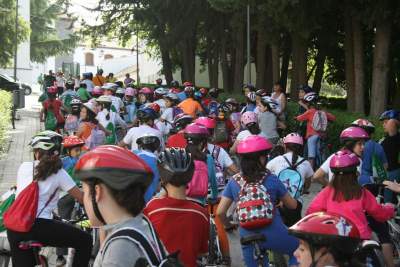
Malaga (Spain)
Málaga is capital of the Costa del Sol, a metropolitan area of 1.2 million people, as well as one of the most famous tourism destinations worldwide. The city has been characterised by a strong demographic increase in the last 50 years, doubling its population between 1960 and 1980. Currently innovation and cultural tourism are increasing their importance in the city’s local economy. Since the approval of its Sustainable Urban Mobility Plan, several actions have been developed such as pedestrian and traffic calming areas, dynamic parking information, and priority lanes for public transport and bicycles. However, these initiatives need to be integrated in a broader strategy, aiming at reducing private vehicle use and improving public and alternative transport.
Málaga is located in the Mediterranean coast of Andalusia, between the Strait of Gibraltar and the mountains of Sierra Nevada. Originally founded by the Phoenicians during Roman times, Málaga obtained the benefits of being declared a confederated city of Rome. By the end of the 18th century, it became the second most important industrial centre in Spain. Today, converted into a world capital of tourism, thanks to the development of the Costa del Sol and its privileged climate and strategic location, Málaga continues to grow.
The city's current main challenge is to become a knowledge-based economy through the development and the collaboration between the University of Málaga and the Technology Park Andalusia (around 500 companies, mainly specialised in ICT applications). The improvement of cultural infrastructures (Thyssen and Picasso museums, city centre and docks regeneration, etc.), is also increasing the role of cultural tourism.
The city presents a quite complete transport infrastructure, which includes a recently renovated train station with high speed connections to major cities in Spain (Madrid, Barcelona, Zaragoza, Seville, Cordoba), and a public transport fleet composed by 242 buses covering 45 itineraries within the city. Two metro lines are under construction, whereas the roadway system includes two highway rings: one close to the consolidated city, and a second in the outside. Nevertheless, due to its rapid increase and disorganised planning between the 1960s and 1980s, Málaga's citizens depend highly on private vehicles in its urban areas with less connection. This, together with a strong 'car culture' (private motorised vehicles represent 42% of the modal split), lead to strong congestions in the central areas and main city destinations (city centre, university, industrial parks). In addition, a clear road hierarchy is missing, whereas currently heavy goods vehicles are allowed to go all through the main road system.
On the other hand, despite cycling and public transport representing just 0.4% and 12.6% respectively, their importance in modal split is continuously increasing due to recent initiatives carried out by the local government: 30 Km of bicycle lanes, changes in the public transport itineraries and frequencies, etc. The recently approved Sustainable Urban Mobility Plan (SUMP) aims at achieving several ambitious objectives by 2025, through a realistic action plan. Measures include switching the modal split from the current 42% to 14% in private vehicle use, together with a parallel increase in bicycle (9%) and public transport (27%). Furthermore, compulsory itineraries for Heavy Good Vehicles (HGV) and new access and traffic control policies will be implemented through ICT based traffic management tools.
UMPMálaga is also a member of the CIVITAS, CIVINET, Covenant of Mayors and Cities for Mobility networks. As a demonstration city within the CIVITAS program, Málaga expects to advance in its SUMP implementation, contributing to its long term objectives. Specifically, Málaga aims at achieving the following targets along the four years of Civitas 2MOVE2 project:
- to increase the bicycle modal split from current 0.4% to 4.0% through a public bicycle scheme, improving at the same time intermodality between busses and bicycles,
- to limit and regulate the presence of HGV within the city, through a HGV priority network,
- to encourage more efficient and sustainable transport and break the 'car culture' tradition through an awareness campaign on electric and alternative mobility focused on new generations and students,
- to improve traffic flow and decrease congestion through an intelligent traffic control system which reduces stop-and-go and greenhouse gas emissions due to transport,
- to provide new decision support tools for future policies linked to sustainable mobility through mobile pollutant monitoring stations within the public bus fleet, offering information on air quality in different areas of the city.
Projects
Mobility solutions
Resources
Multimedia Library
This is recommended related external content and can be viewed by clicking on it. By clicking you consent to the display of external content. This enables personal data to be transmitted to third-party platforms.
Read more about our privacy policy.


















